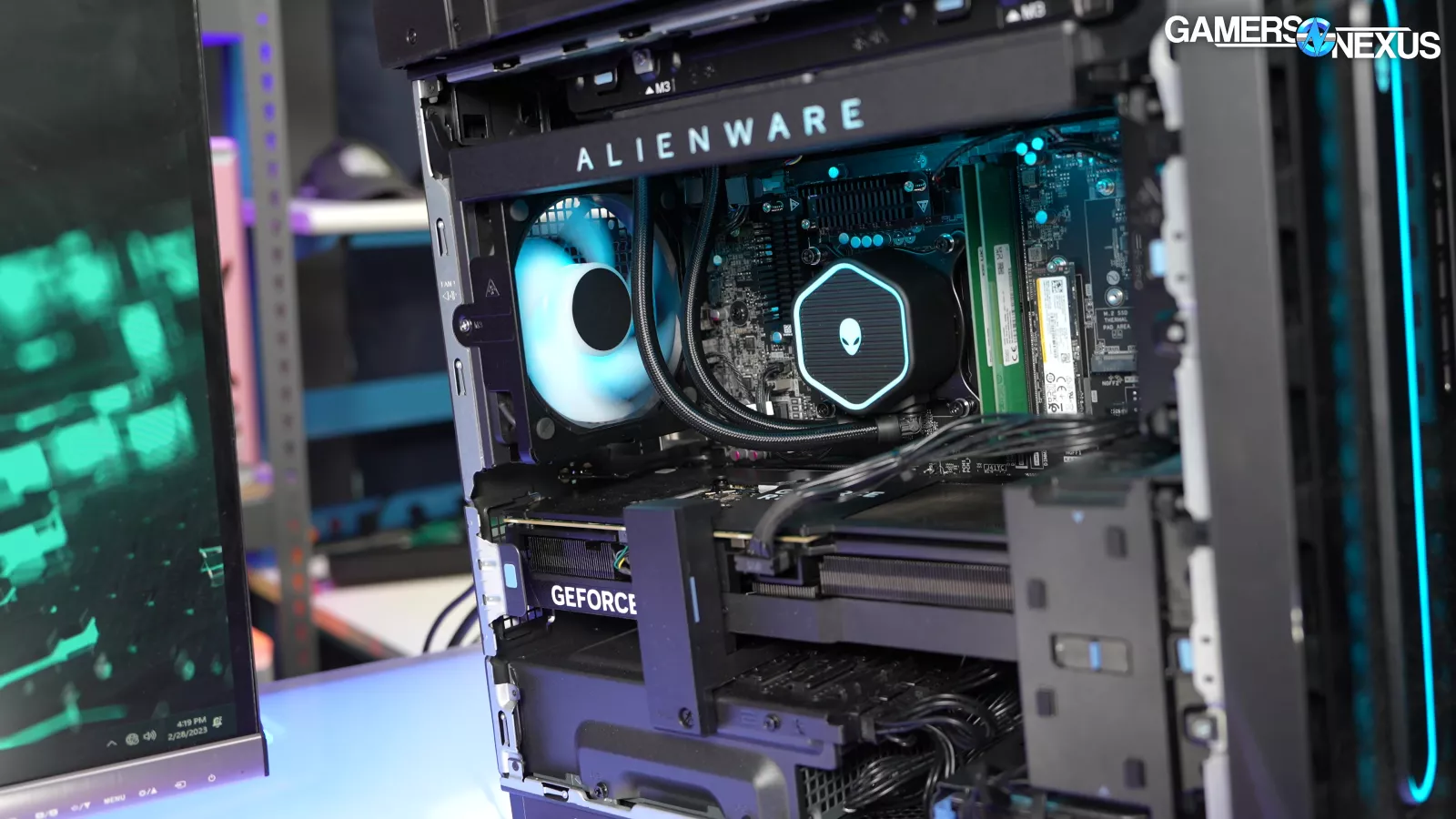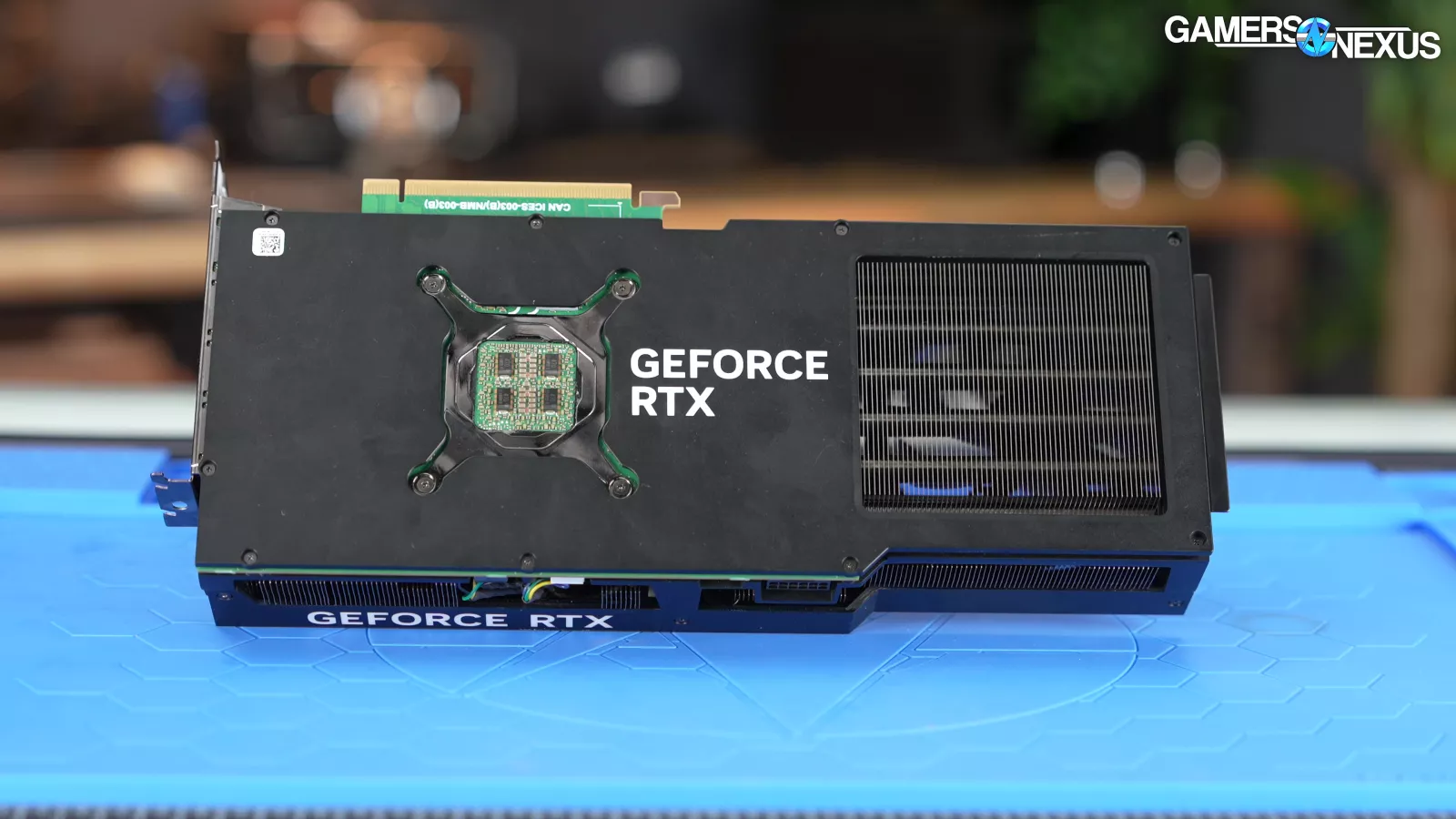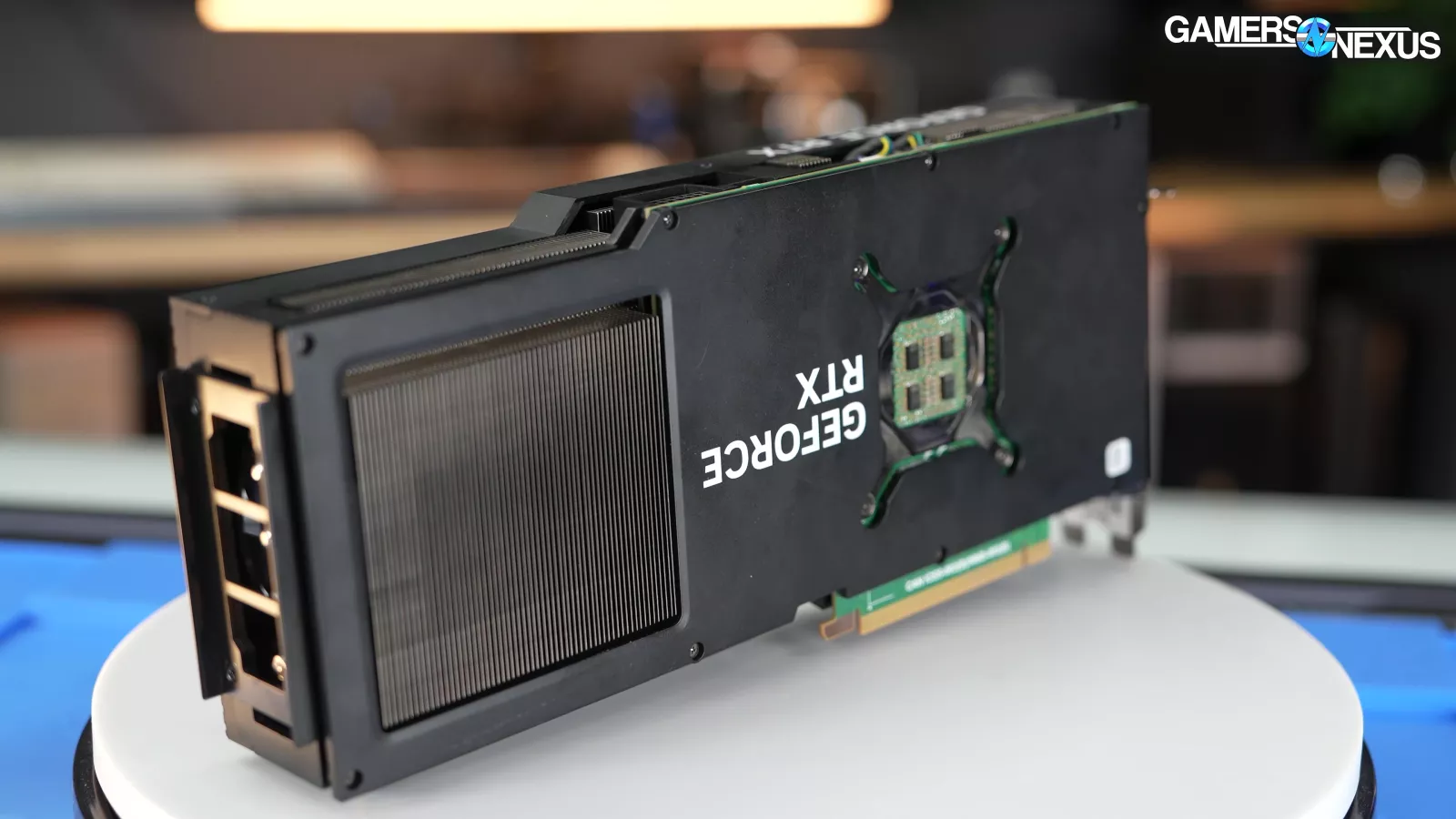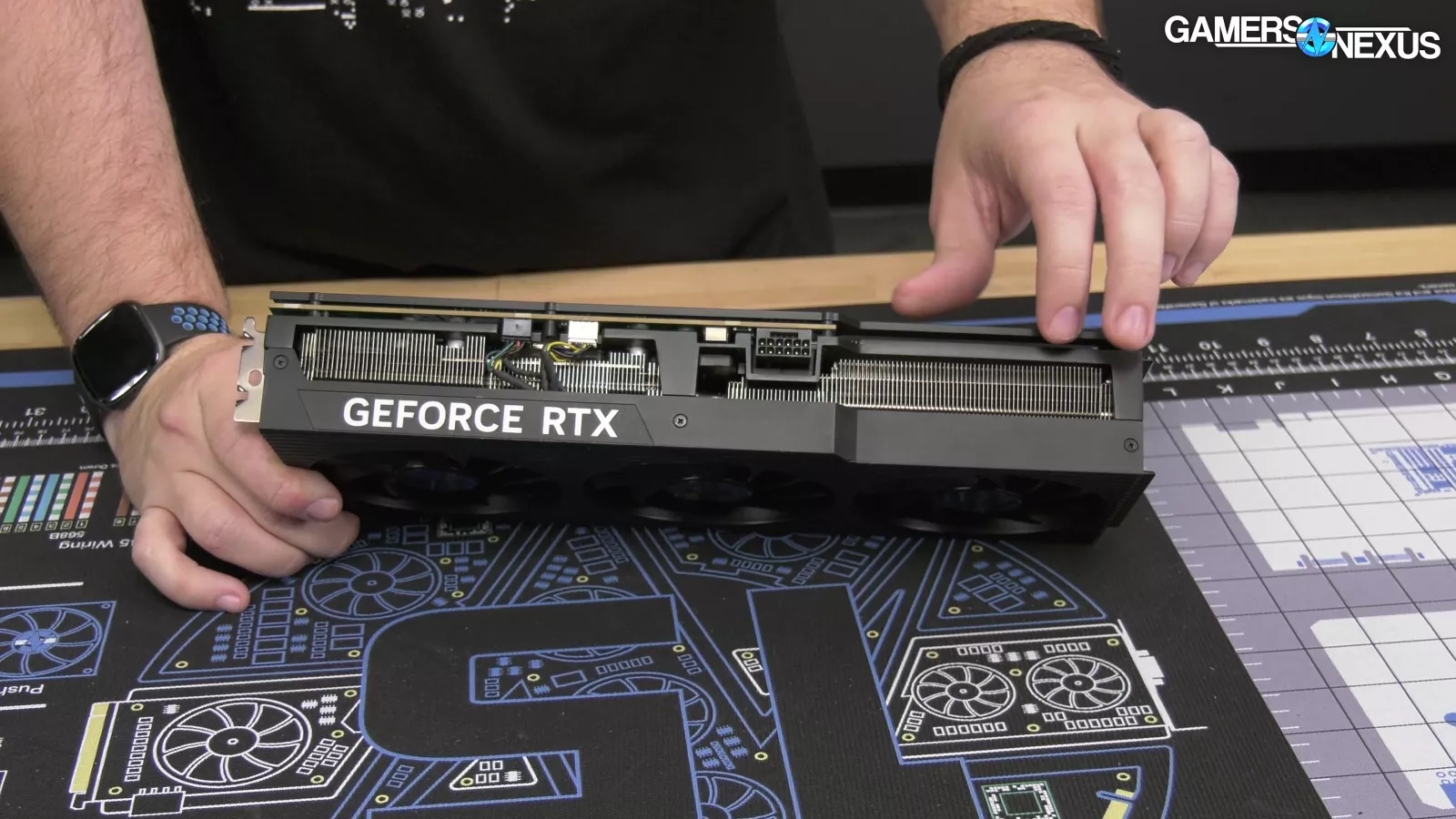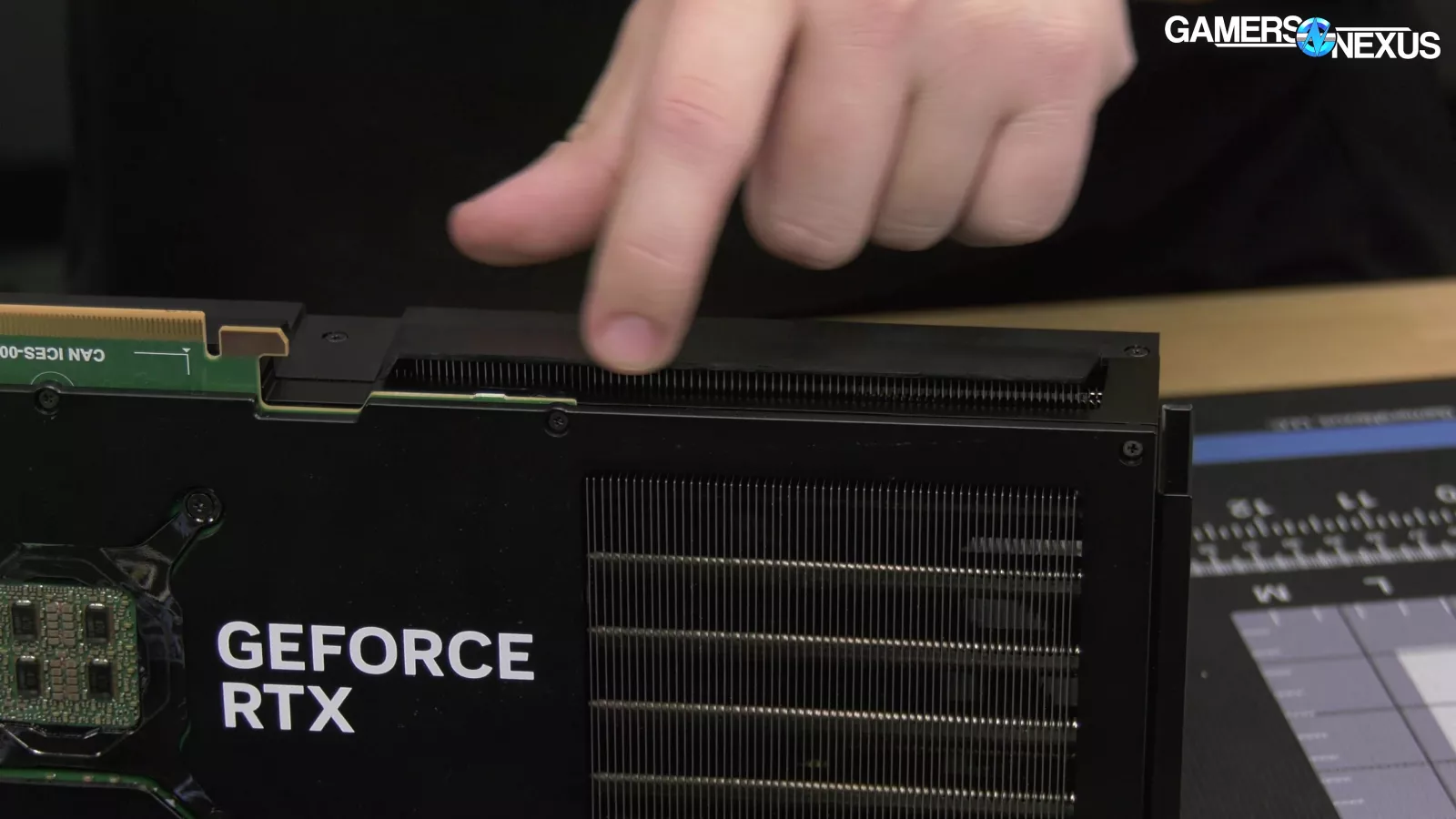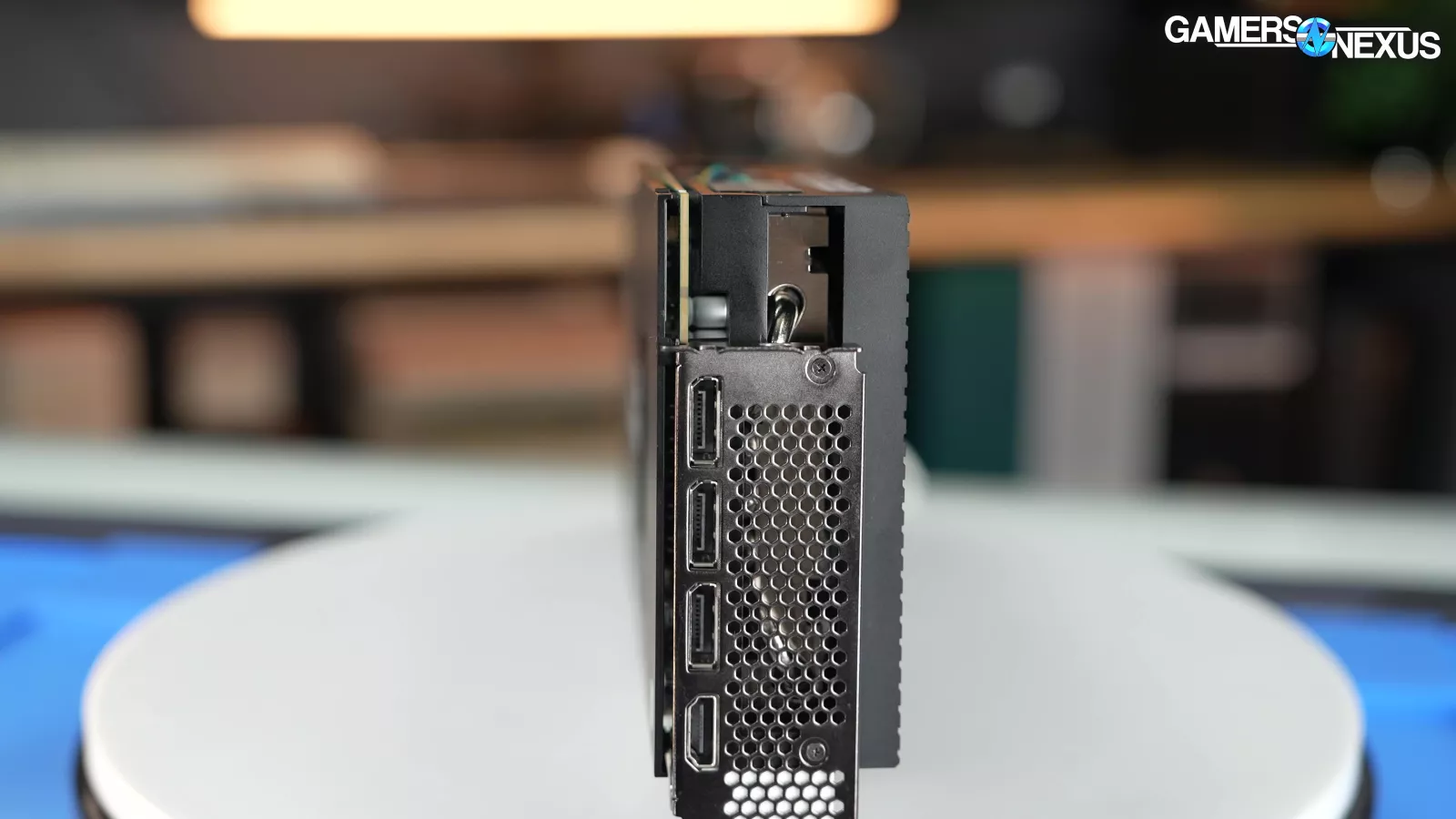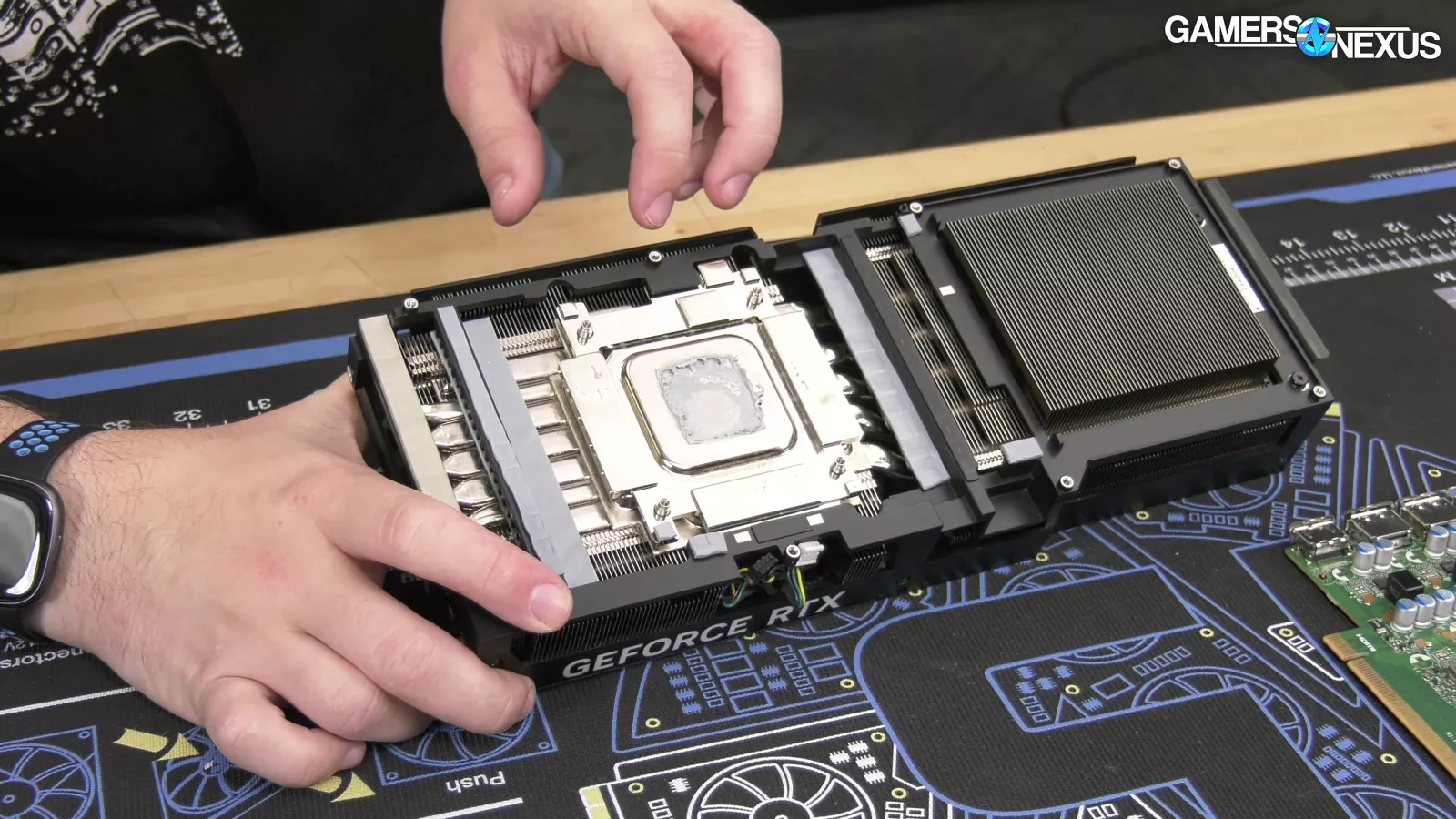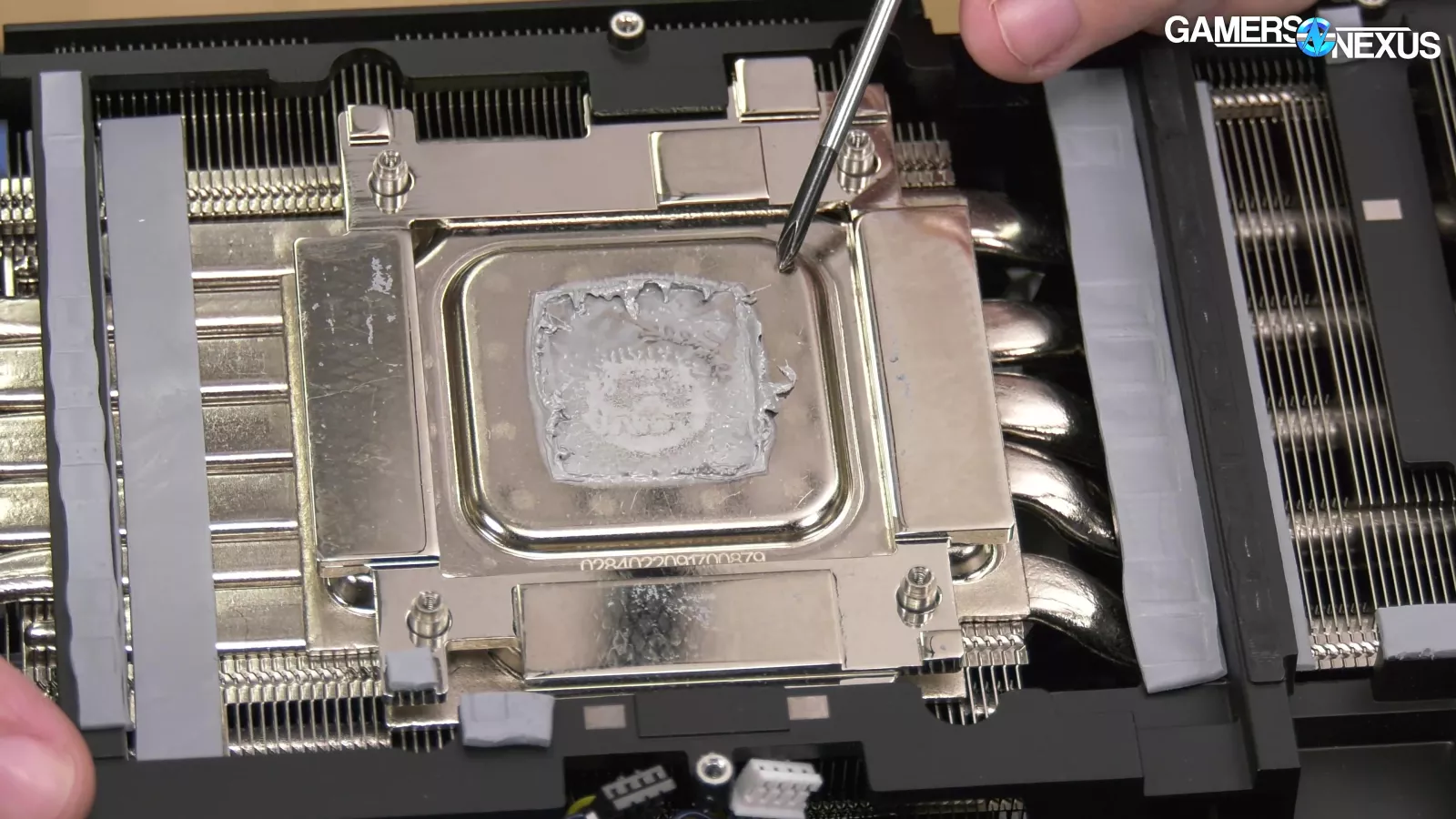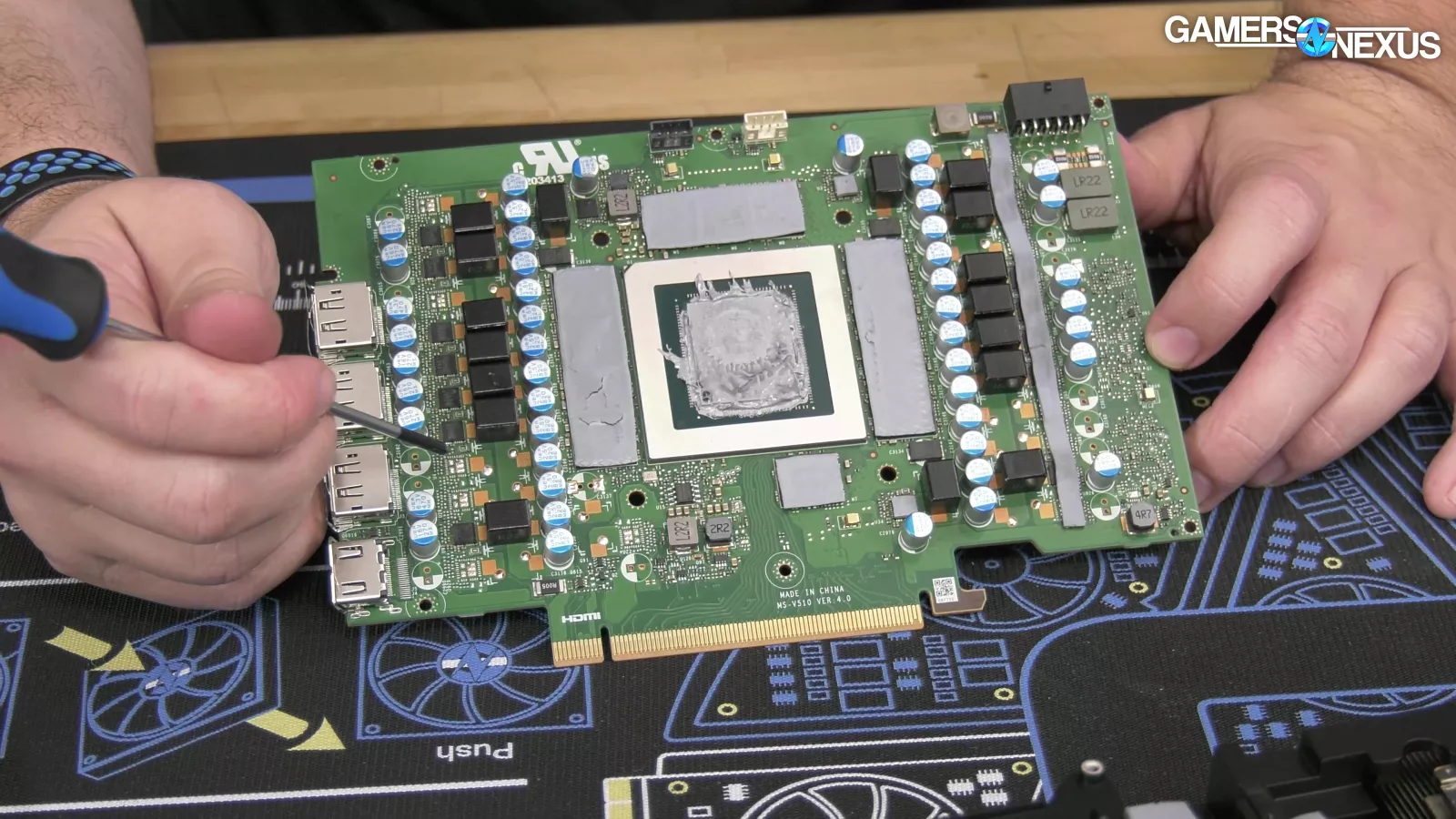
Dell Made an Impressive RTX 4090: Relatively Small, Large Flow-Through, & Good Cooling
Last Updated:
Alienware’s RTX 4090 remains a competent successor to the company’s RTX 3090 GPU
The Highlights
- Dell’s RTX 4090 is based on a reference 4090 PCB
- The card's power target isn’t configurable
- It was very easy to take apart.
- We yanked it out of an Alienware R15 pre-built PC we purchased
- Release Date: January 5, 2023

Back in July 2021, we took a look at Dell’s RTX 3090 graphics card and thought it was surprisingly good. Fast forward more than two years and we’re reviewing Dell’s RTX 4090 GPU, which we stripped out of an Alienware R15 build we previously reviewed.
Dell’s RTX 4090 is based off of a reference PCB, which is actually different from NVIDIA’s Founder Edition card, and generally has the best compatibility with water blocks. There are multiple "reference" PCBs this generation, but the Dell one matches a prior Inno3D design.
In terms of the card’s design, it uses a simple black-and-plastic shroud. The GPU is coupled with a large fin stack, and because the PCB stops short of it, there’s a lot of space for flow-through cooling where the air comes in the front of the third fan and is pushed out the end.
Credits
Testing, Host, Writing
Steve Burke
Camera, Video Editing
Vitalii Makhnovets
Video Editing
Tim Phetdara
Writing, Web Editing
Jimmy Thang
One big downside to the card is that it does not allow over-power provisioning for overclocking. The VBIOS is somewhat sadly power restrained and overclocking software doesn’t let us set over 100% power target so there’s no room to do any overclocking.
In our review, we will be stacking Dell’s RTX 4090 against Asus’ RTX 4090 Strix as a point of comparison, which is a more premium card. Asus’ variant has much more stable power delivery, a higher power target with overclocking options, and also has multi-VBIOS compared to the Dell’s single VBIOS equivalent.
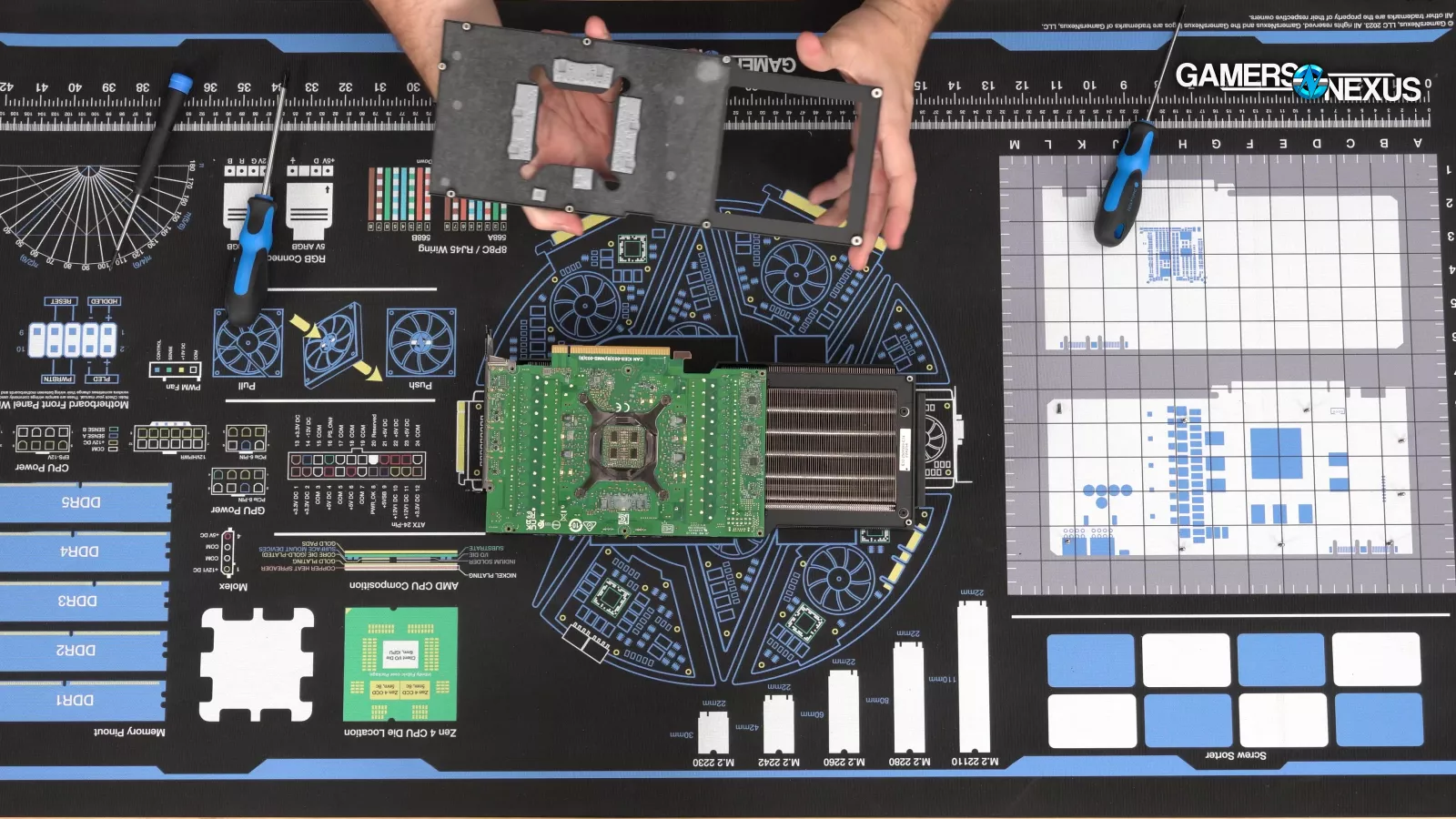
Tear-Down
Dell’s card features three fans, one extending beyond the PCB. At the top of the card, the shroud is completely out of the way of the exhaust. The bottom is covered by the shroud, but has little ducts for air to escape. The back of the card also has a big opening coupled with a perforated IO plate, which you can remove with 2 screws. One nice thing about the card’s design is that it has two fan connectors that are externally accessible, making it easier to disassemble without ripping a connector out accidentally (and easier for block installation).
Removing the metal backplate of the card, you’ll notice that the thermal pads on it contact the back of the PCB’s memory modules. We rarely see the backplate leveraged for its additional surface area, so this is one of the stronger points of Dell's design (or at least, its partner's design -- whoever that is). They've done well to make use of the backplate. Pulling the PCB and cooler apart reveal a black aluminum baseplate for structural rigidity and some VRM cooling. This joins with the nickel-plated copper coldplate that contacts the GPU and memory modules.
Dell is using a heat sink mixing heat pipes and a vapor chamber, which contacts the GPU directly. The company combines the vapor chamber with five heat pipes, which collectively do a good job providing as much GPU coverage as possible (the larger 10mm heatpipes in particular provide high surface area through the cold plate, opposite the GPU core). These extends through the massive fin stack to make use of the surface area provided by the aluminum fins.
On the PCB, we noticed that there’s room to populate more capacitors, MOSFETs, inductors, and build additional VRM phases. This suggests there is headroom for a more powerful card like a 4090 Ti -- or they just down-costed it. On the GPU itself, we noticed that the thermal paste on it looks spread across in an oddly manual way. Cleaning off the thermal paste reveals the AD102-300-A1 die, which is to be expected for a 4090.
Overall, disassembly was pretty straightforward and accessible with 17 screws that allowed us to get down to the PCB. Another little thing that we appreciated seeing, or in this case not seeing, were any warranty void stickers. This is great because they’re not really enforceable anyways and are anti-consumer.
Up next, we'll look at thermal performance and acoustics. Note that we did all of this testing prior to the disassembly.

Thermal Benchmarks
Stock Thermals | Power-Normalized
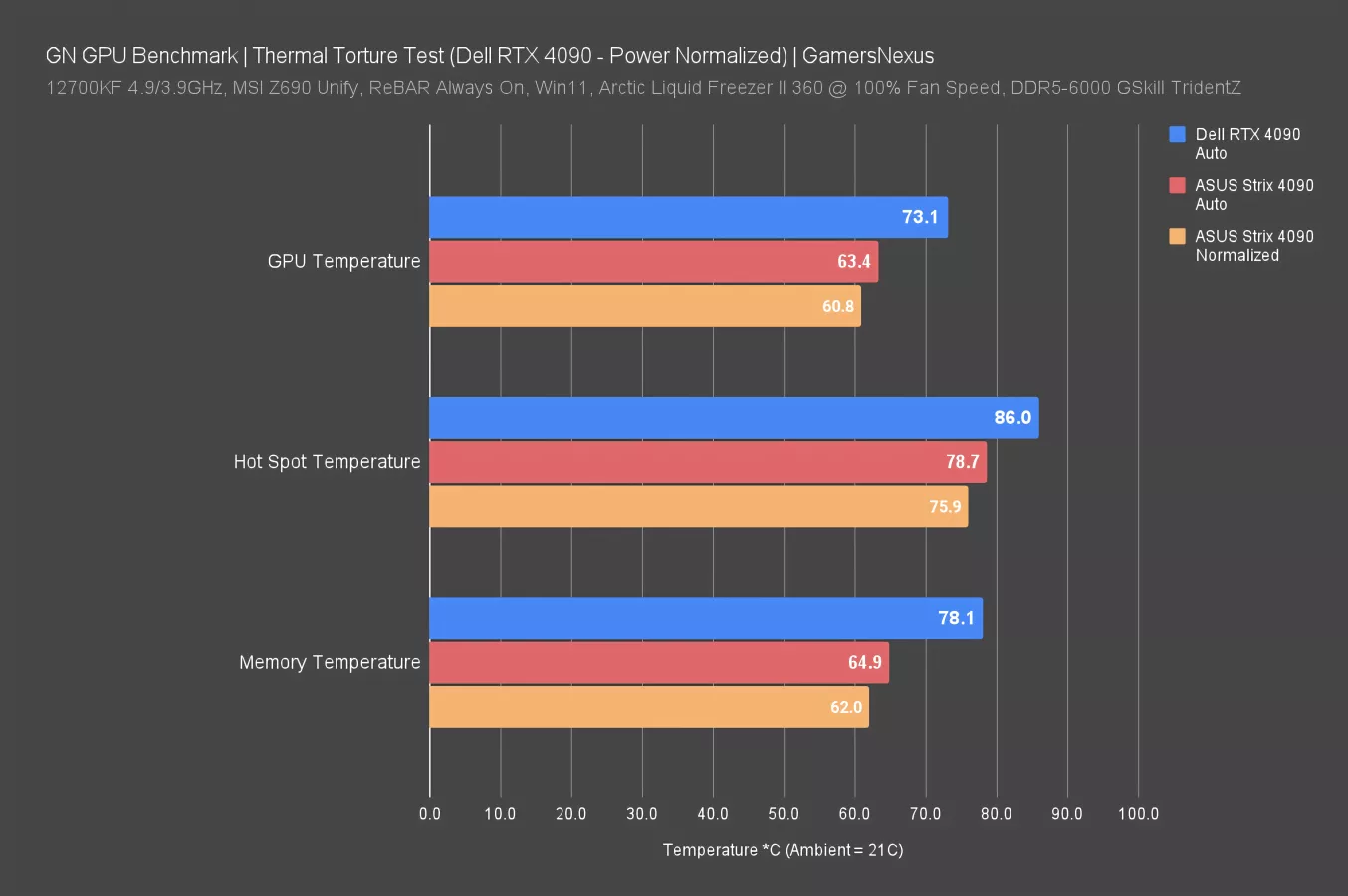
For our thermal performance benchmarks, we’ve only included the RTX 4090 Strix as an ultra high-end comparison. The point is to just offer a reference, not to determine which of these two cards is better. They’re obviously very different.
The chart above shows the steady state averages: At equilibrium, the Dell 4090 held a 73 degrees Celsius GPU Core with its auto setting, which stabilized at 52% fan speed for 1980RPM. The hot spot was 86C, which really isn’t bad. The memory temperature was 78 degrees -- that’s not great, but it’s still well within spec. This might only become problematic in a very high ambient case with non-stop load on the memory, like a former mining use case.
With auto, the Strix card was about 10 degrees cooler in the core metric, about 7 degrees cooler in the hot spot, and a significant 13 degrees cooler for the memory. But this comparison isn’t good enough: the Strix runs significantly lower RPM, and is therefore quieter when left to auto.
Normalizing for noise levels though required increasing the Strix’s fan speed. We went from 1495RPM to 1871RPM, which equalized the noise levels with Dell card's 1978RPM.
The noise-normalized Strix was another 2-3 degrees cooler in most metrics.
Again, the point isn’t to determine whether the Strix card is better -- it obviously is, and Dell wouldn’t disagree -- but just to provide a reference point for a barebones design versus one of the better partner models on the market. The most important factor though is that the Dell 4090 passed our thermal torture test, which is the most we seek from a barebones OEM design.
As for power consumption, we found that these two cards were within 10W of each other -- remarkably close, meaning we were also power-normalized within variance.
Flow-Through A/B Comparison
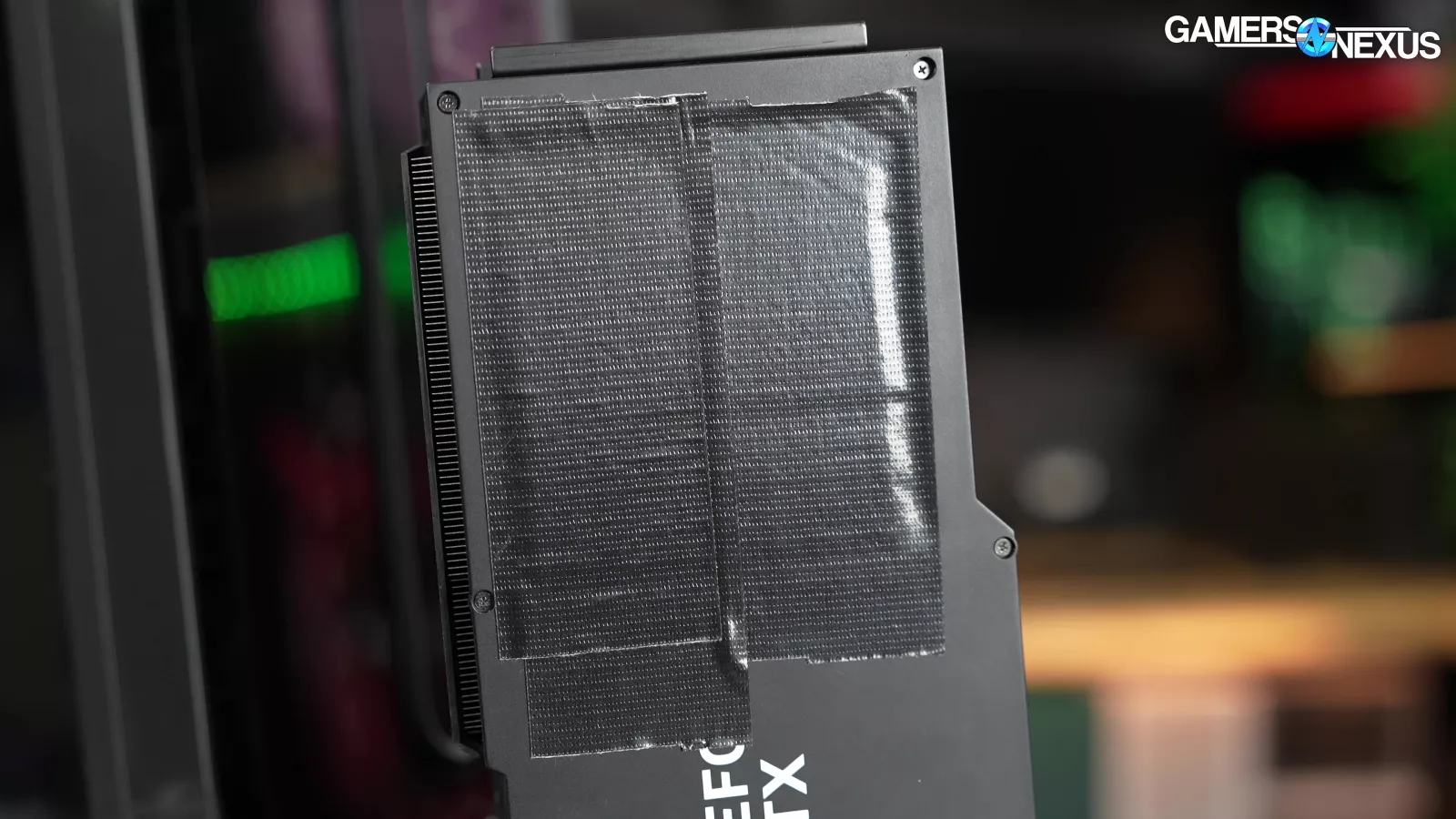
Purely as a curiosity, we decided to cover up the flow-through area of the card. This is something we’ve been wondering about, so it’s just an academic exercise -- there’s no practical value. We used 2 layers of heavy-duty gorilla tape to cover the hole in the backplate. We also controlled the fan speed and the power target, so all variables were fixed except for the presence of the flow-through hole.
Taping it over increased temperature by about 5 degrees Celsius across the board, plus or minus a little bit. The large flow-through area that Dell included does actually do something, and does clearly help the GPU thermals.

Again, this card came from our Alienware R15, although the same concept would apply to the R16 that we’re working on reviewing now: The card will pull air in through the front intake fan and the lower ventilation in the side panel, then anything passed through the flow-through hole will hit the top exhaust from the CPU cooler. Although this increases the effective ambient of the CPU cooler intake, these larger 240mm liquid coolers are more capable of handling it and the GPU will benefit more than the CPU will lose -- especially given Dell’s clamping-down on power budget.
Noise & Acoustic Testing
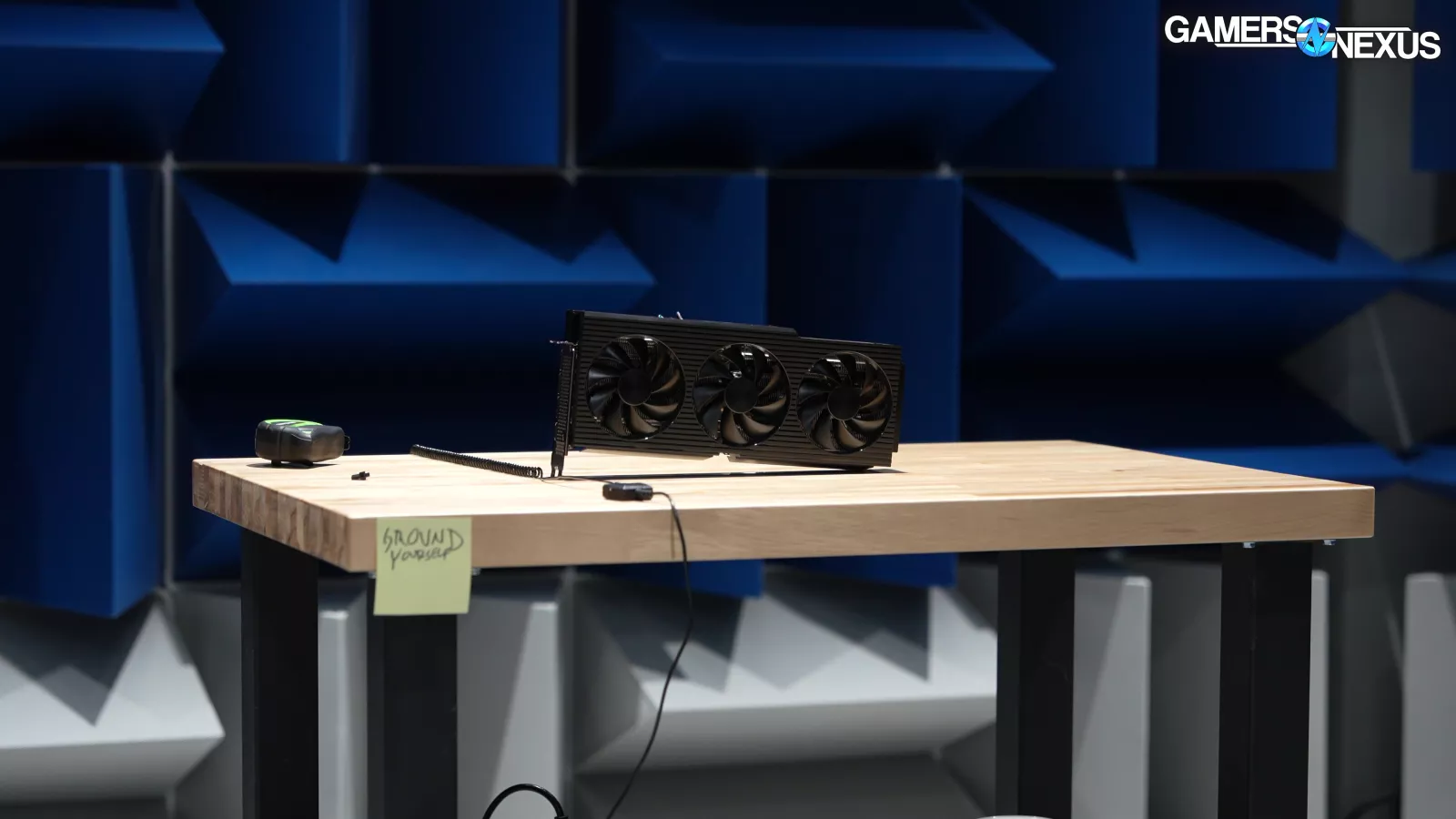
Noise levels were tested in our new GN Hemi-Anechoic Chamber, which is a special testing environment for hyper-accurate acoustics analysis -- it eliminates as much background noise as possible, allowing us to ensure data isn’t interfered with by other office or world noise. To support our continued purchase of equipment like this, please head over to Patreon and throw a few bucks our way. Our Patreon supporters have been enabling this type of work for a long time now, and you can be part of our next big equipment use. We’ve been getting a ton of use out of the acoustic chamber, as it’s already popped-up in our Ally review, our Terra and A4-H2O case reviews, and now this one.
Let’s take a look at some data.
Dell RTX 4090 Frequency Spectrum
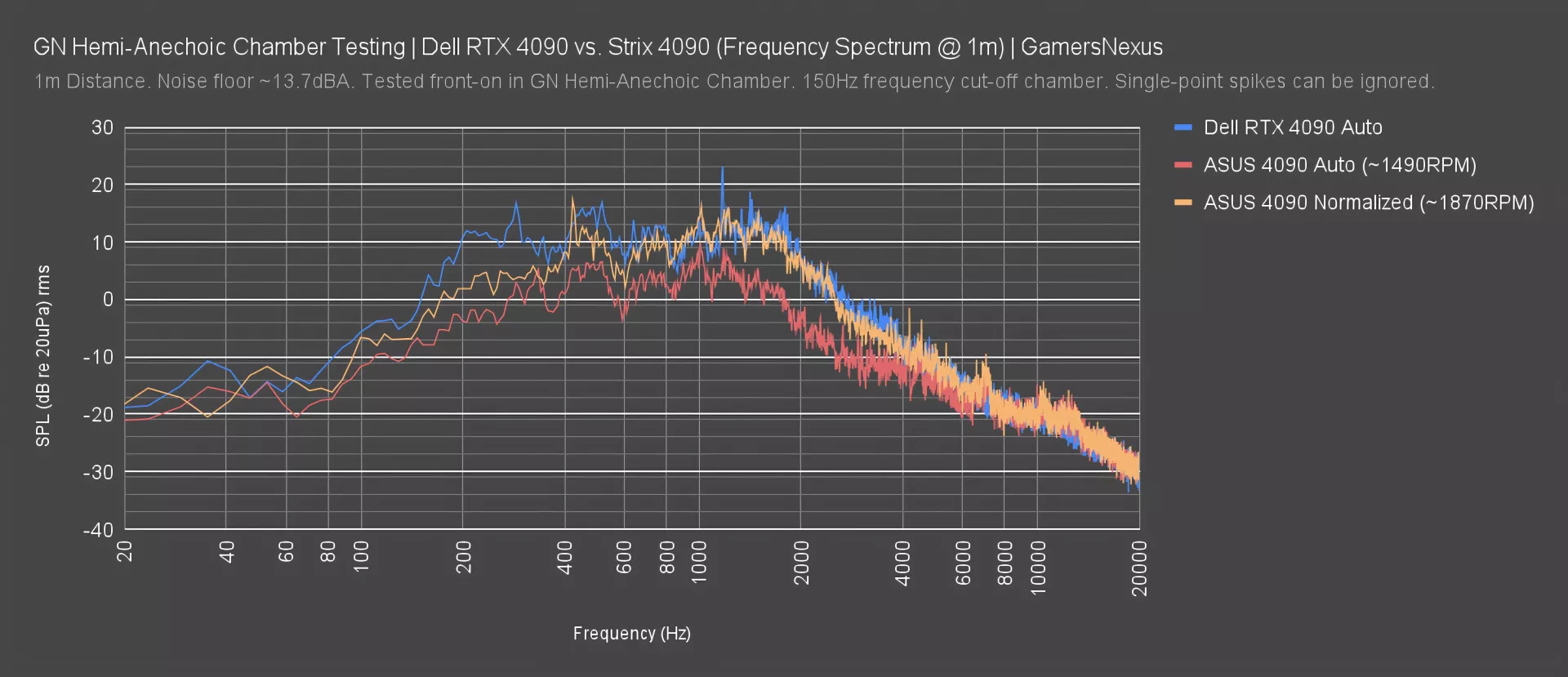
Starting with the frequency spectrum analysis, Dell’s auto profile tends to settle at 1978RPM under our test conditions. The frequency spectrum has some stronger levels towards the low-end, particularly at 200-800Hz. The last few devices we’ve tested have been at the higher-pitched end of this, mostly because they’ve been handheld gaming PCs.
The Dell card falls off gradually after 2000Hz, decaying without any abrupt frequency changes that might be more annoying to a human listener.
Plotting the ASUS card at auto, this configuration is overall much quieter across the spectrum. Its behavior tends to have a sooner fall-off at around 1200Hz, where we see our final spike before it begins the decay. It levels-out briefly at 2500-4000Hz before falling further.
Finally, a roughly noise-normalized dBA SPL Strix at 1870RPM followed a similar frequency spectrum to the Dell 4090. The Dell card had higher levels at 200-400Hz, but otherwise, they’re very similar noise profiles.
Noise Levels
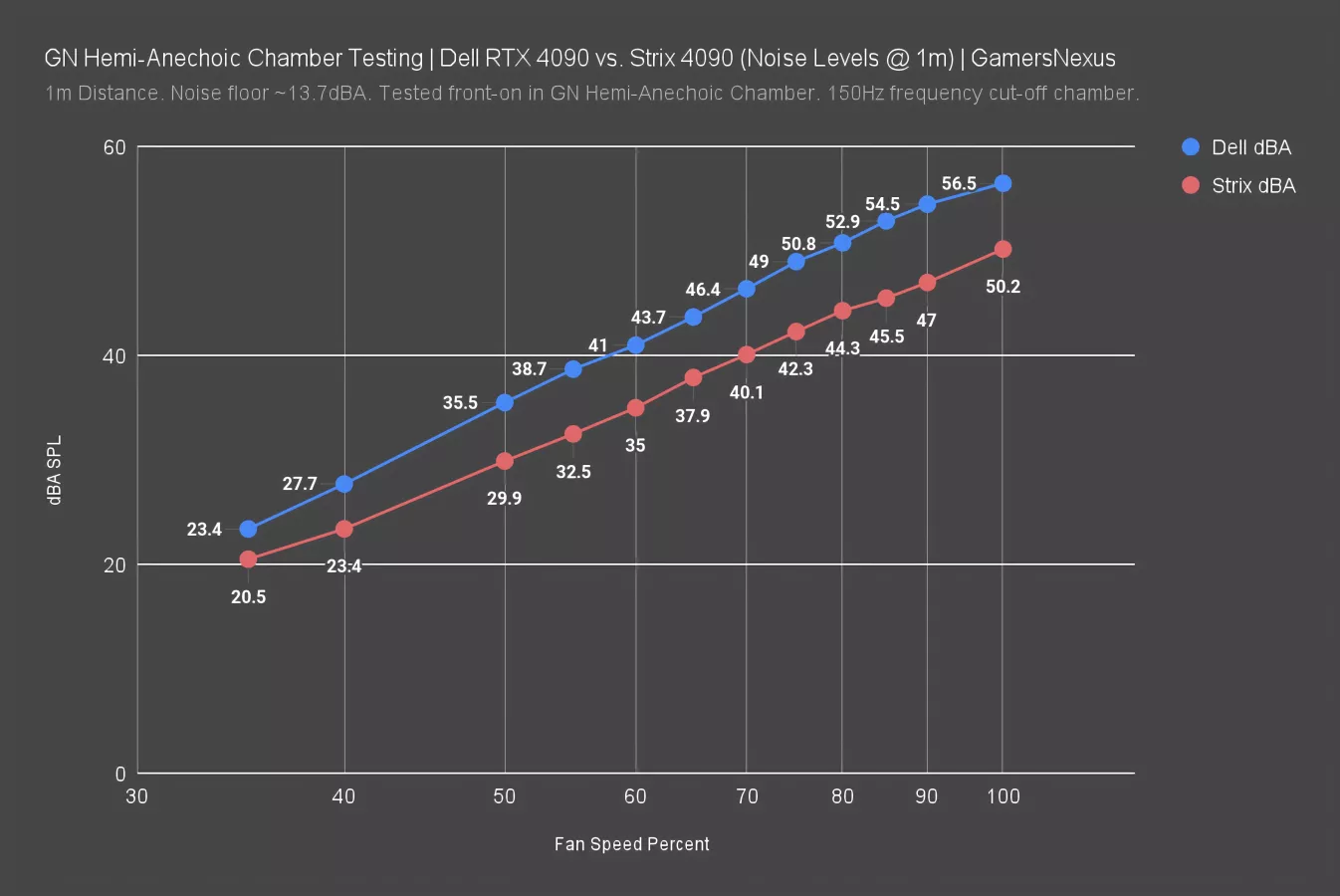
Looking at noise levels now, also measured in our hemi-anechoic chamber, we end up with the chart above.
The Dell card runs a higher RPM at a given percent and has less overall range, so its noise level is higher per percentage increase. Like-for-like RPM, they are often within 1dBA of each other -- but the Strix is favored for cooling, as we saw earlier.
The Dell card’s progression of noise is similar to the Strix here. We’re not seeing any sudden spikes or flattening. The card tends to stay within the 35-35.5 dBA range when set to auto, tested at 1m and with a noise floor of 13.7dBA.
Frequency vs. Steady State
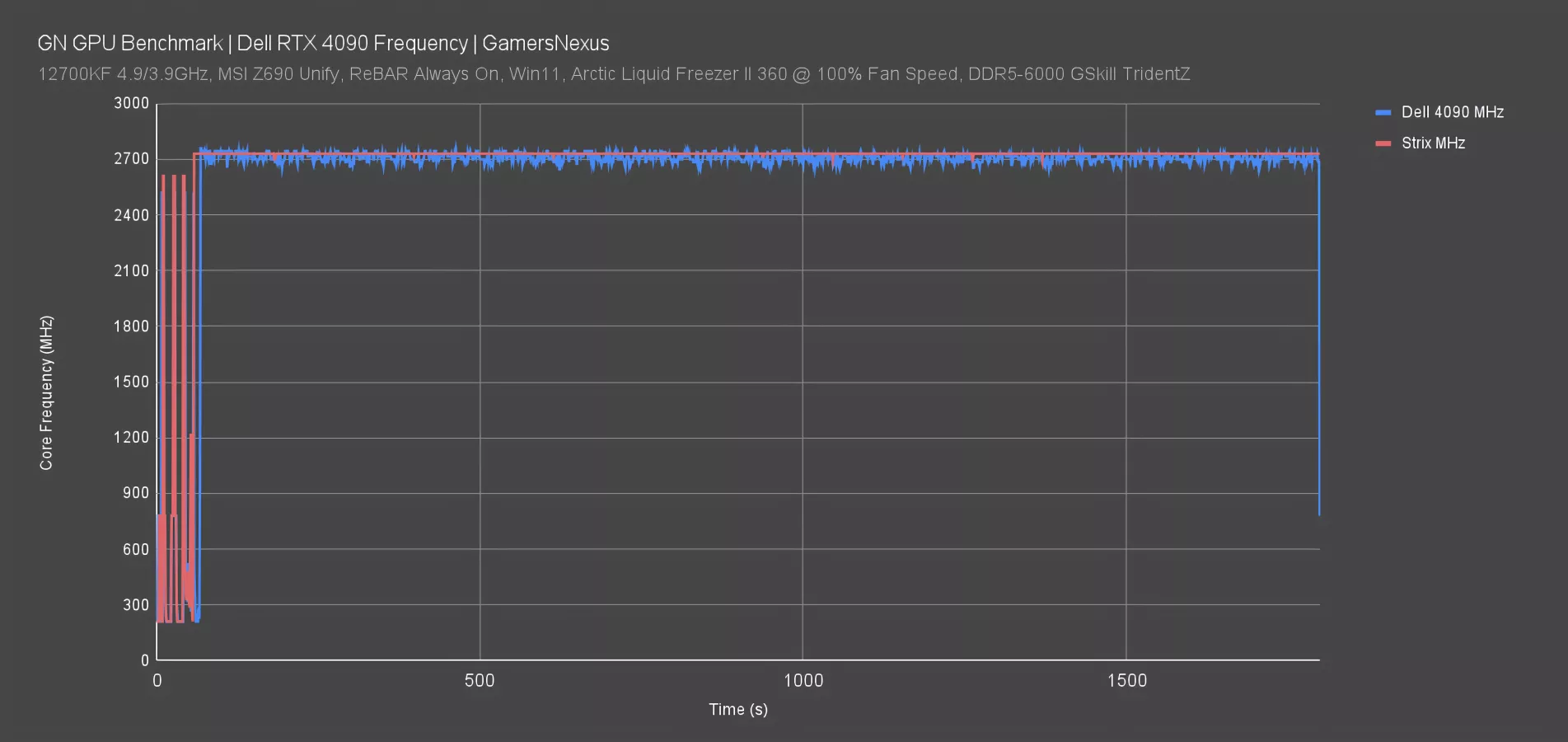
And here’s the next most important plot: Frequency. This looks at the sustained frequency in megahertz over a prolonged workload. The Dell 4090 fluctuates a lot for core clock, with a range of +/- about 100MHz. That’s relatively high point-to-point for a 4090, as most partner models now will hold a steadier, flat frequency.
Adding the Strix to the plot demonstrates that: It’s at a flat 2730MHz, whereas the Dell card ranges from 2650 to about 2745MHz. Dell is hitting a power perfcap limit, whereas the Strix is hitting a voltage reliability limit. To flatten this frequency and boost higher, Dell would need to allow VBIOS to pull more power. We could do that ourselves, but it’s locked to 100% in OC software.
Conclusion
Alienware and Dell prebuilt PCs have historically had lots of problems but some of their power supplies and GPUs are surprisingly well put together, which made us curious to take a deeper dive into the company’s RTX 4090. After putting it through its paces, Dell’s card performs well overall.

The GPU core temperature is honestly lower than we had expected, especially considering its relatively small size. This is impressive for an OEM-made card that uses a reference design. The cooler does well and we weren’t running into thermal throttling with it. We also didn’t have any major acoustic complaints.
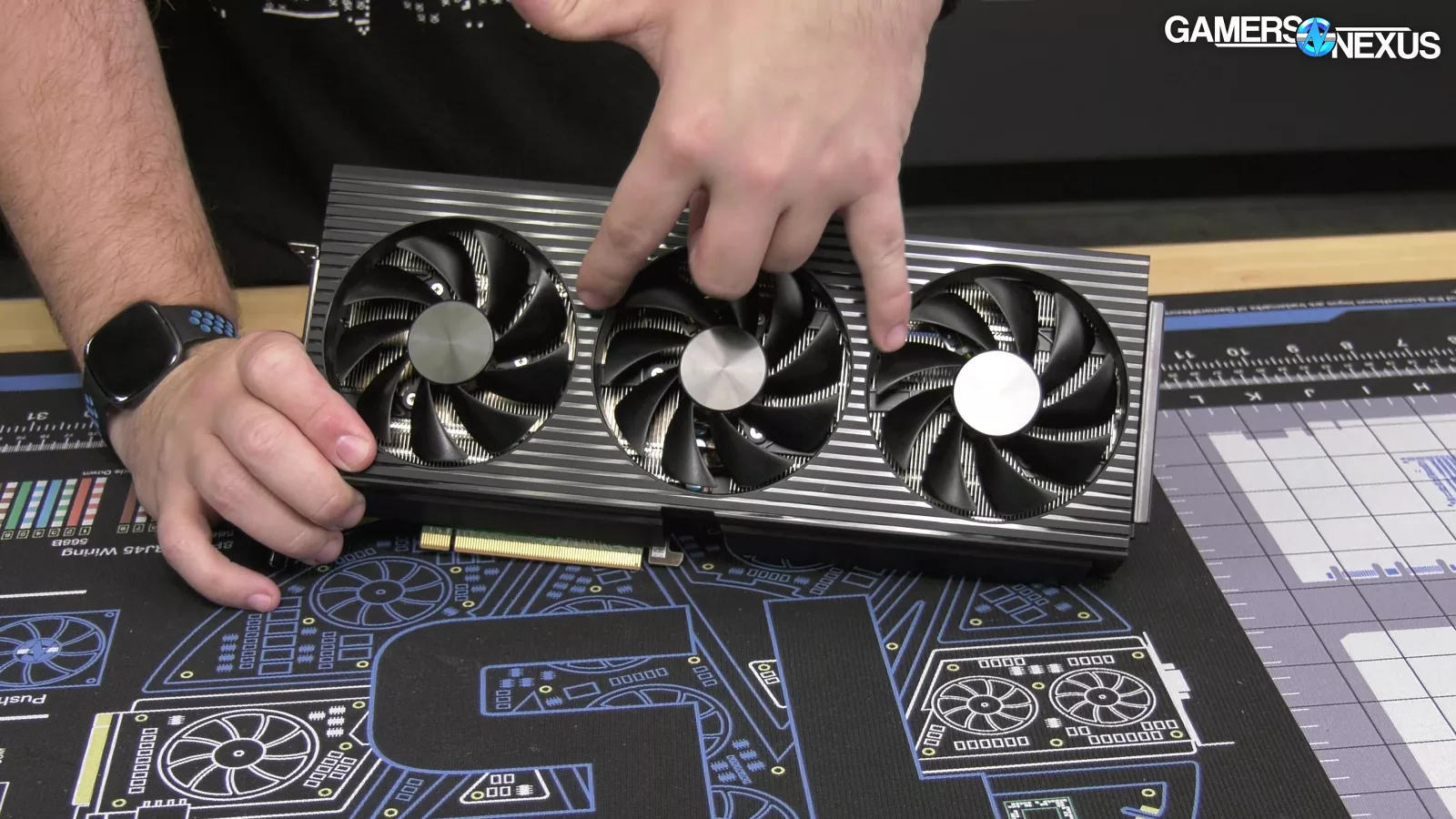
The tear-down is also straightforward. We’re not sure how many different water blocks will fit on this reference design PCB, but our Alphacool did fit on it, for what that's worth.
At the end of the day, if you buy an Alienware or Dell pre-built, at least you’ll know that the GPU should be good enough.
